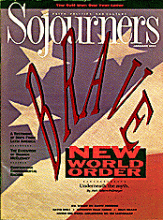Only days after Nicaragua withdrew its claim against the United States in the World Court of Justice, international aid began flowing into that country.
The court ruled in 1986 that the U.S. government had violated international law in its proxy war against Nicaragua - including the CIA mining of its harbors - and ordered damages to be paid, without specifying an amount. The Sandinista administration had estimated to the court that $17 billion in reparations was due, according to a recent Latinamerica Press report by Paul Jeffrey.
But ever since President Violeta Chamorro took office in April 1990, the U.S. government had pressured Nicaragua to drop the "David versus Goliath" suit. And on September 12, the new Nicaraguan government obliged by relieving the United States from its obligation to pay any damages from the war.
Within 24 hours of the official announcement of the decision to drop the case, a $55 million loan for Nicaragua was approved by the International Monetary Fund (IMF), over which the United States has extraordinary influence. The World Bank has announced it will grant a $110 million loan to Nicaragua.
Also, the U.S. government has "forgiven" $259.5 million - or about 88 percent - of Nicaragua's debt to the United States as a further reward for the dropping of the World Court case.
Contrary to a glowing article in the Christian Science Monitor (under the headline "Promising Early Results From Nicaragua's Bold Reforms") filed from New York, most Nicaraguans have failed to see any benefits thus far from the new loans to that country, according to observers there.
"People have heard many promises but haven't seen anything positive yet," said Bill Callahan of the U.S.-based Quixote Center, who recently returned from Nicaragua.
Read the Full Article

